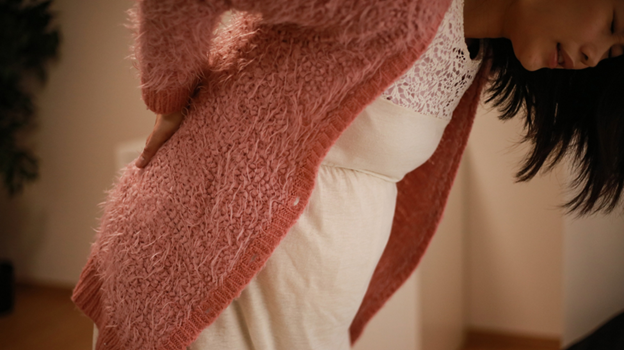12 Pregnancy Pains a Chiropractor Can Ease Safely and Naturally

Pregnancy is extraordinary—and demanding on your body. As hormones loosen ligaments and a growing belly shifts your center of gravity, new aches can appear from head to toe. The good news: drug-free, gentle strategies can help you stay comfortable and mobile throughout each trimester. Here are 12 common pregnancy pains a chiropractor can address safely and naturally, plus simple tips you can use at home.
1) Low back ache from postural shifts
As your bump grows, the lumbar spine tends to arch more (lordosis), taxing joints and muscles. Gentle, pregnancy-specific adjustments and mobilizations can restore alignment, while targeted exercises teach your core and glutes to share the load.
2) Pelvic girdle pain (PGP)
Instability at the sacroiliac (SI) joints often shows up as deep, one-sided buttock or groin pain. A chiropractor can use low-force techniques to balance the pelvis and suggest a pelvic support belt, hip-stability drills, and activity pacing to reduce flare-ups.
3) Round ligament pain
Sharp, quick stabs near the lower abdomen or hips can stem from tension in the round ligaments supporting the uterus. Soft-tissue release, gentle stretching guidance, and breathing strategies help calm this nagging, position-sensitive pain.
4) Sciatica or leg pain
Uterine growth and pelvic changes may irritate the sciatic nerve, causing tingling or aching down the leg. Nerve-glide drills, glute activation, and position coaching (e.g., avoiding prolonged sitting) can reduce nerve sensitivity and improve relief between visits.
5) Pubic symphysis discomfort
Pain right at the pubic bone—especially when turning in bed, climbing stairs, or standing on one leg—often reflects extra mobility at the symphysis. Stabilizing taping, symmetric movement cues, and modifications (e.g., keep knees together when rolling) can help.
6) Mid-back and rib soreness
Expanding ribs and postural changes strain mid-back muscles and intercostals. Thoracic mobilization, rib mechanics work, and simple mobility drills (cat-camel, thread-the-needle) restore motion for easier breathing and better sleep.
7) Neck and shoulder tension
Screen time plus new sleep positions can compress the upper back and neck. Targeted mobilization, ergonomic coaching (pillows at elbow height while side-lying), and gentle strengthening ease tension headaches and improve posture.
8) Headaches (tension or cervicogenic)
Hormonal shifts and tight suboccipital muscles can spark headaches. Soft-tissue therapy, upper-cervical mobilization, hydration reminders, and micro-breaks often reduce frequency and intensity without medications.
9) Hip pinching and lateral thigh pain
As the pelvis widens, the hip rotators and the IT band can get cranky. Glute-medius strengthening, hip capsule mobilization, and sleep tweaks (pillow between knees and ankles) relieve pressure and improve gait mechanics.
10) Foot, arch, and heel pain
Extra weight and ligament laxity flatten arches, stressing the plantar fascia. Calf and foot mobilization, intrinsic-foot strengthening (towel scrunches), and pregnancy-friendly orthotics or cushioned shoes keep you on your feet comfortably.
11) Wrist and hand numbness (carpal tunnel)
Fluid retention can compress the median nerve, causing night numbness or tingling. Nerve-glide drills, forearm release, neutral-wrist splints for sleep, and posture tips reduce symptoms so you can type, cook, and rest with fewer interruptions.
12) Sleep-position aches
Side-sleeping—recommended later in pregnancy—may trigger shoulder, hip, or low-back complaints. A chiropractor can personalize your pillow setup (head, knees, and belly support), teach pain-free log-rolling, and suggest wind-down mobility so you wake up less sore.
Safety first: what makes pregnancy-smart care different
Reputable clinicians use low-force, trimester-specific techniques, avoid lying you flat on your belly, and tailor tables or pregnancy pillows for comfort. They coordinate with your OB/midwife, screen for red flags (e.g., severe swelling, persistent headaches with vision changes, vaginal bleeding, fever), and modify or pause care when appropriate. You should always share your medical history, current medications, and any changes in fetal movement.
At-home tips to extend your relief
- Move often, gently. Short walks and mobility “snacks” every 45–60 minutes keep joints lubricated and reduce stiffness.
- Support your posture. Stack ears-over-shoulders-over-hips, raise screens to eye level, and sit with hips slightly higher than knees.
- Dial in sleep. Side-lie with a pillow under your bump, one between knees and ankles, and another supporting your upper arm.
- Hydrate and snack wisely. Steady fluids and protein-rich snacks help curb cramps and headaches.
- Use heat or cold carefully. Warm showers or a heating pad (low setting, short sessions) relax tight areas; cold packs can calm acute hotspots.
When to call your provider immediately
Seek urgent evaluation for sudden, severe headaches, vision changes, chest pain, shortness of breath, severe swelling, persistent right-upper-abdominal pain, fever, vaginal bleeding, fluid leakage, or markedly reduced fetal movement. These symptoms fall outside typical musculoskeletal issues.
Pregnancy asks a lot of your body, but discomfort doesn’t have to be the norm. With gentle, individualized guidance and smart self-care, you can stay active, sleep better, and feel more like yourself throughout all three trimesters. If you’re ready for targeted, drug-free relief that respects both you and your baby, consider integrating chiropractic care into your prenatal routine to address pain at the source and keep you moving comfortably through delivery and beyond.
Leave a reply
You must be logged in to post a comment.











